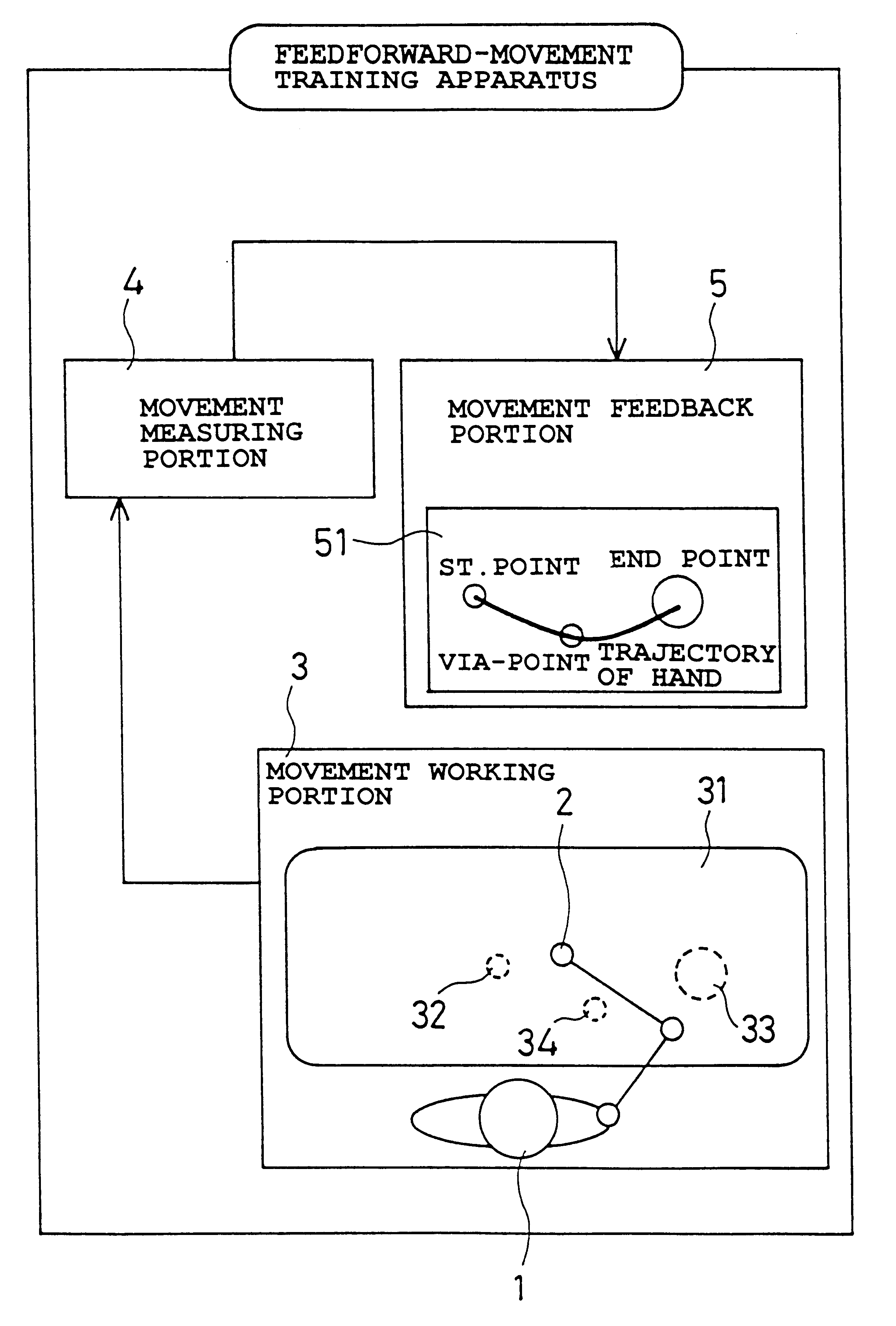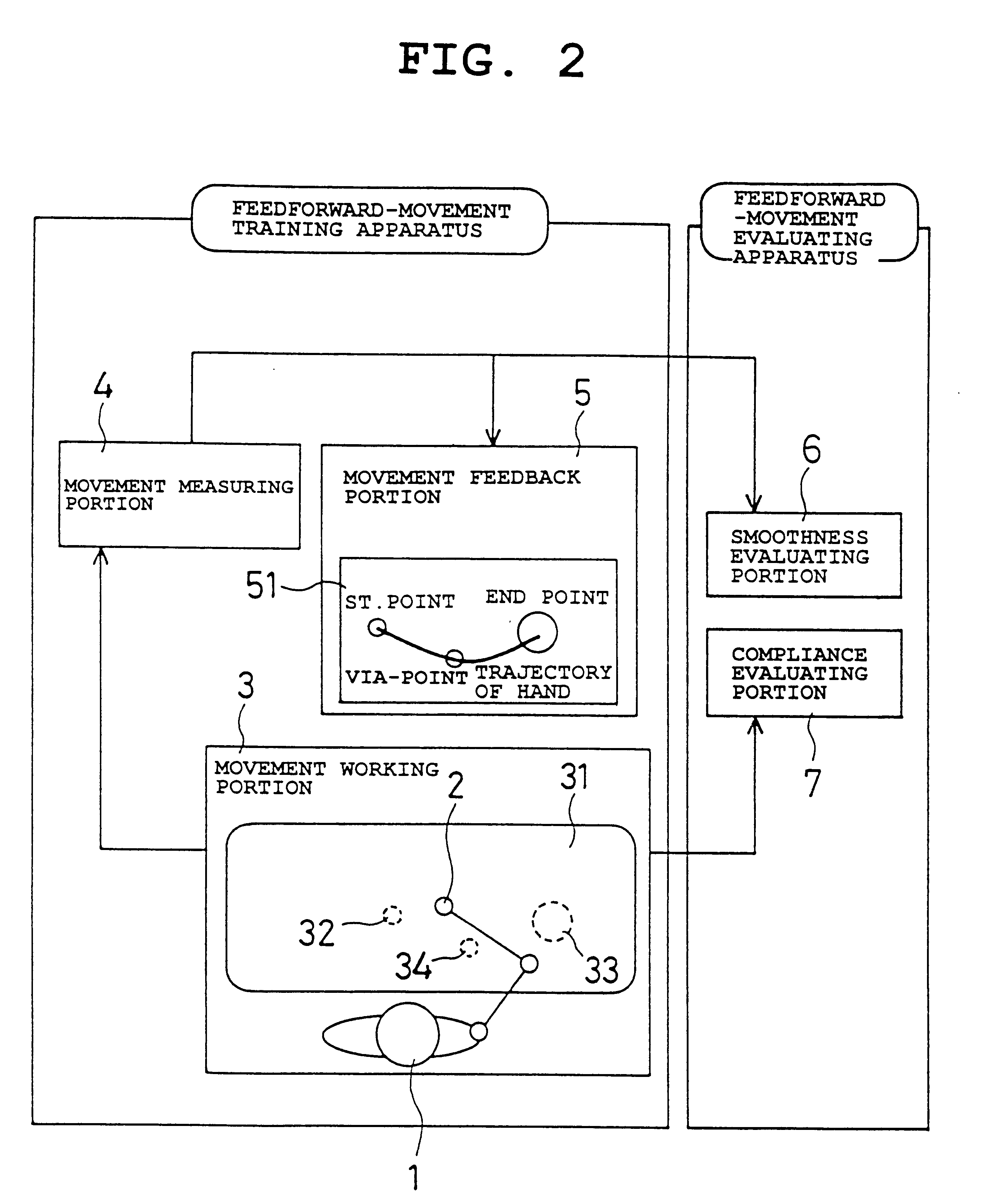Feedforward exercise training machine and feedforward exercise evaluating system
a training machine and exercise technology, applied in the field of feedforward exercise training equipment, can solve the problems of difficult to restore the motor function of quick and accurate movement of the arm and leg, difficult to use control signals, and slow and accurate movement, etc., to improve the control over the body part, improve the effect of accuracy and less stiffness
- Summary
- Abstract
- Description
- Claims
- Application Information
AI Technical Summary
Benefits of technology
Problems solved by technology
Method used
Image
Examples
Embodiment Construction
Using the feedforward-movement evaluating system of the present invention shown in FIG. 2, hands 2 of two patients A and B were trained in feedforward-movements.
Circles having radii of 1 cm, 2 cm, and 2.5 cm, respectively, were used as the start point 32, the via-point 34, and the end point 33 on the movement working portion 3 of the feedforward-movement training apparatus. The start point 32 and the end point 33 were placed with a distance of about 45 cm therebetween and at a position of about 35 cm apart from the body of the patient 1 in such a way that the movement becomes parallel to the body. The via-point 34 was placed between the start point 32 and the end point 33 and at a position about 7 cm closer to the body. The time limit of moving from the start point 32 to the end point 33 was set to 600 msec so as to maximize the speed of movement within the patient's movement capability.
The trajectory of the hand 2 and the results of the movement measurements such as whether passing...
PUM
 Login to View More
Login to View More Abstract
Description
Claims
Application Information
 Login to View More
Login to View More - R&D
- Intellectual Property
- Life Sciences
- Materials
- Tech Scout
- Unparalleled Data Quality
- Higher Quality Content
- 60% Fewer Hallucinations
Browse by: Latest US Patents, China's latest patents, Technical Efficacy Thesaurus, Application Domain, Technology Topic, Popular Technical Reports.
© 2025 PatSnap. All rights reserved.Legal|Privacy policy|Modern Slavery Act Transparency Statement|Sitemap|About US| Contact US: help@patsnap.com



